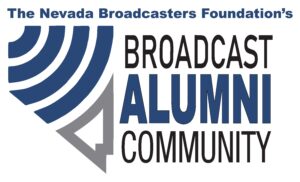
Here are some of the regulatory developments of significance to broadcasters from the last week, with links to where you can go to find more information as to how these actions may affect your operations.
- Music licensing organization Global Music Rights (GMR) has agreed to a three-month extension of its current interim licensing agreement. GMR and the Radio Music License Committee (RMLC), which represents commercial radio broadcasters, have been in court for years arguing over whether GMR’s royalty rates should be subject to antitrust regulation. According to the letter announcing the extension, it appears that GMR and RMLC are seriously discussing a settlement to resolve their litigation. We wrote more about the litigation and this extension of the interim license on our Broadcast Law Blog, here. See the joint RMLC-GMR letter announcing the extension, which contains a link to the form used to sign up for the extension, to be completed by December 29.
- The FCC announced that comments are due by February 11, 2022, with reply comments due by March 14, 2022, on an FCC proposal to allocate responsibility for multicast streams that are originated by one TV station and hosted by another during the ATSC 3.0 Next Gen television transition. Under the proposal, these multicast streams will be considered part of the license of the originating station, not the station that is hosting the channels. The proposal would include not just the required ATSC 1.0 “lighthouse signals” originated by a station that has already converted to ATSC 3.0 but hosted by a station that has not converted, but also the program stream of an unconverted station hosted on a station that has converted to Next Gen TV. (Public Notice)
- At its last Open Meeting of 2021, the FCC adopted a Notice of Proposed Rulemaking and Notice of Inquiry that seek ways to make the visual component of EAS alerts on TV stations more accessible to viewers who are deaf or hard of hearing. As proposed, the on-screen messages that accompany alerts would be made more uniform so that they are clearer and more descriptive. Broadcasters would also be required to check for and use the Common Alerting Protocol (CAP) version of an EAS alert, if one is available, as these IP-based alerts have more robust visual information. The Notice of Inquiry asks for ideas on how the legacy, over-the-air “daisy chain” EAS architecture can be redesigned to deliver better visual messaging. Comment periods on the NPRM and NOI will be set after publication in the Federal Register. (NPRM, NOI, and News Release)
- The FCC issued a $3,500 penalty to a licensee for failing to file a license application when it finished construction of a new FM translator. The license application tells the FCC that the station is on the air and operating and allows the FCC to confirm that it was constructed as approved by the new station’s construction permit. By not filing the license application, the station was operating without authorization. Work with your technical and legal advisors to be sure you are filing all of the required documentation when you put a new station on the air or modify a station already operating. (Forfeiture Order)
- A North Dakota TV licensee filed must-carry complaints against two local MVPDs for their refusal to carry the licensee’s TV station. The MVPDs claimed that the station was unable to deliver a good quality signal, so the station was not entitled to must carry. The FCC rejected the MVPDs’ arguments, finding that as the station had agreed to assume all costs necessary to provide a good quality signal to the system’s headend, the systems must carry the station. (Order)
- Monday was the deadline to file for a place on the primary ballot for candidates for Texas elective offices to be decided in the November 2022 elections. While Texas’ primary, currently scheduled for March 1, is the earliest in the 2022 election cycle, other states will follow soon. See our Broadcast Law Blog article here for more information on the political advertising issues that you should be considering now in preparation for the upcoming elections.
- The Senate Commerce Committee approved the nomination of Alan Davidson to be head of the National Telecommunications and Information Administration. NTIA oversees federal government spectrum policy. Look for Senate leadership to try to get Davidson confirmed by the full Senate by the end of the year.
Courtesy Broadcast Law Blog


